Seedling Check In: Stossel Creek, One Year Later
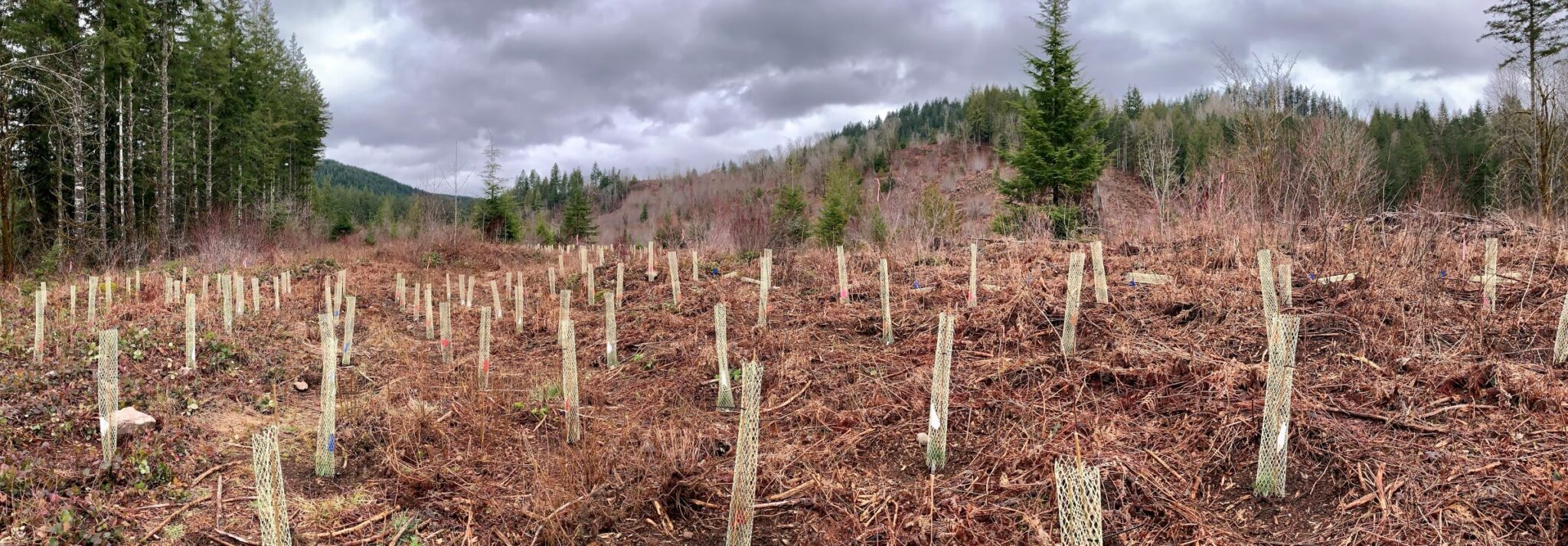
Even with the ongoing pandemic, 2020 was a busy year at Stossel Creek!
In early 2020, just before we realized that a bottle of hand sanitizer wasn’t going to be enough to save us from the news, NNRG and partners hosted a workshop and field tour at Stossel Creek. The Stossel Creek restoration project aimed to restore a site in the Tolt River watershed while also evaluating the viability of different species and provenances of seedlings.
In late February 2020, contracted crews installed 14,130 trees across 54 acres of Seattle City Light’s Stossel Creek property. This included the installation of six trial plots (in two “blocks”), with 150 trees planted per plot. Each trial plot was planted with ten different species or seeds sources (Douglas fir WA/OR/CA, western redcedar WA/OR, shore pine, grand fir, incense cedar, Oregon white oak, and western white pine, all reflected in the chart below).You can find more details about the the project in our previous coverage here.
One year later, we checked in with the restoration crew to see what they’ve been up to and how the seedlings are faring.
Road Decommissioning
In July 2020, a crew decommissioned the access road at the entrance to the Stossel Creek project. The goal was to restrict access of ATVs into the project site. Crews dug deep “water bars” and used rocks and brush found on site to make the access path impassable for motorized vehicles.
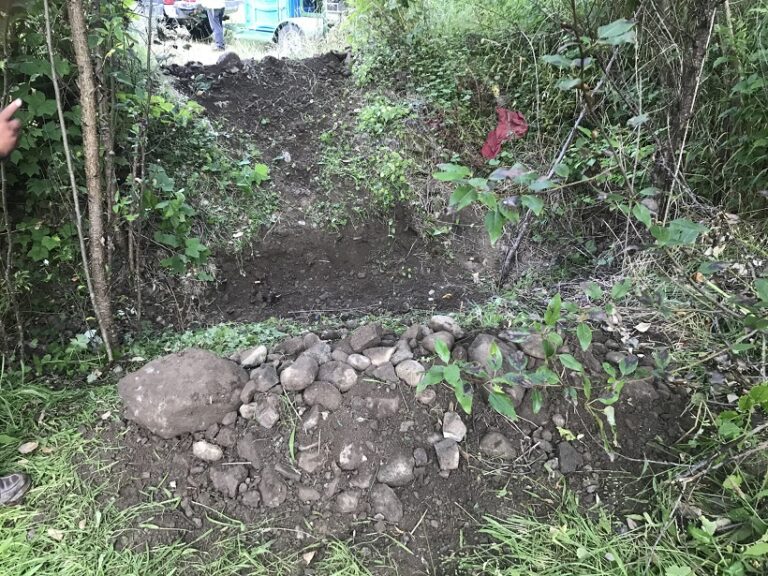
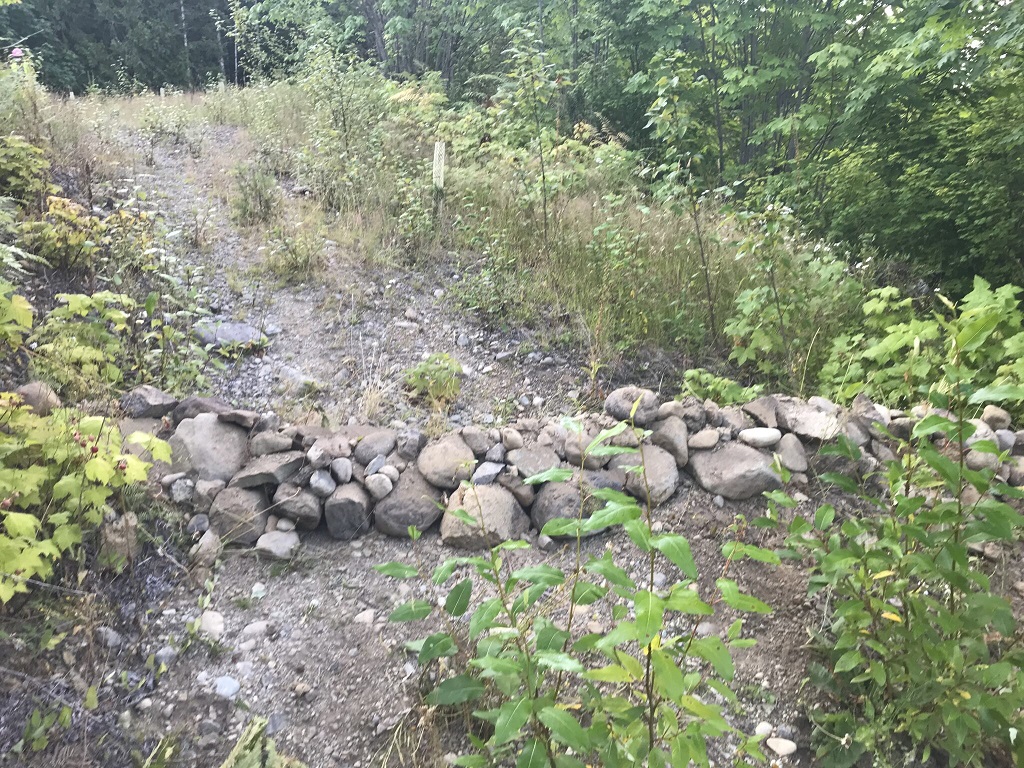
Competition with Native Vegetation
The project site is experiencing significant natural regeneration of native vegetation, including lots of thimbleberry and Bigleaf maple stump sprouts, some of which is beginning to compete with the newly planted tree seedlings. To address this problem, in September crews removed three feet of vegetation around each tree planted in the six trial plots. Freeing seedlings from competing vegetation is often called seedling release.
In 2021, Mountains to Sound Greenway Trust crews will continue to cut back vegetation in the six trial plots and will plan on doing so at least once earlier in the season to reduce possible mortality (likely June).
Monitoring Growth
Monitoring protocols were built into the project planning, and include photo monitoring and collecting data on tree height, vigor (that is, the seedling’s overall health and potential for growth), and damage.
We’re sharing a summary of survival and vigor data for the six trial plots, with the caveat that this is early data and we caution against drawing any conclusions about seedling viability at this point.
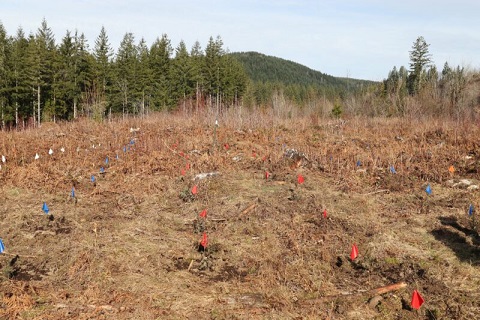
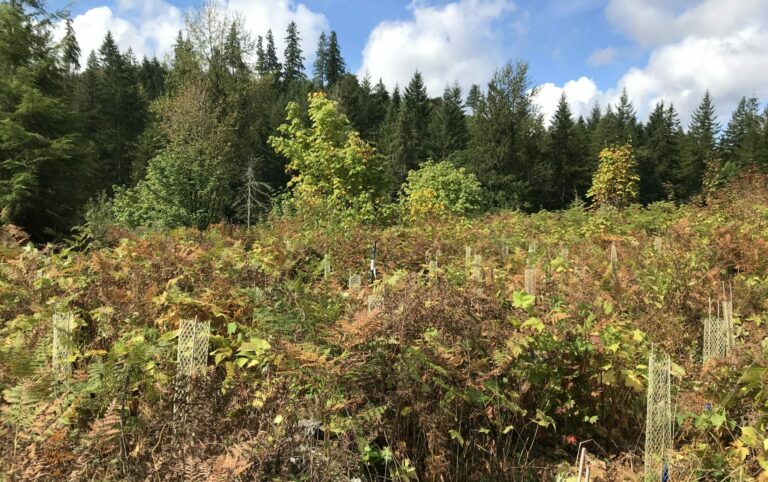
Year 1 Survival
September monitoring showed a varied level of survival rates and vigor levels amongst the ten different tree species and seed sources. The Western redcedar (Thuja plicata) from Oregon and Washington had the lowest survival rates and vigor levels. Douglas Fir (Pseudotsuga menziesii) from California and Oregon had the highest survival rates. Oregon white oaks (Quercus garryana) had the highest vigor levels.
Overall, Block 2 had lower survival rates than Block 1. This difference in survival could be due to differences in soil types, or because Block 2 is located on a hillside that is highly exposed. Species better adapted to high sun exposure such as Garry Oaks (Quercus garryana), Western white pine (Pinus monticola) and Douglas Fir (Pseudotsuga menziesii) had higher survival (compared to other species) with the exposed conditions of Block 2. Block 2 Rep 2 had the lowest survival rates. This plot was also located in the most sun exposed location on site.
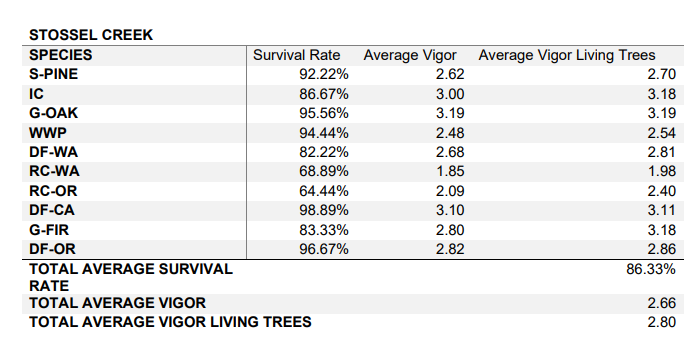
You can hear more about the project and early results in the presentation below. Our partners at MTS Greenway and Seattle City Light will continue to monitor the site on an annual basis and we look forward to future data to share with you all.
Thanks to Dan Hintz and his crew at MTS Greenway for assisting us with this check in. Photos courtesy of MTS Greenway.
https://youtu.be/uy90frnfQFo
Hear Denise Krownbell from Seattle City Light describe early results from the Stossel Creek project in this recorded presentation.

Leave a Reply